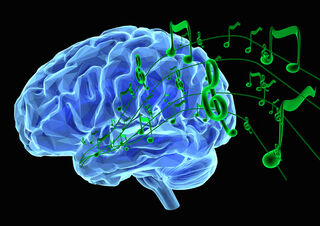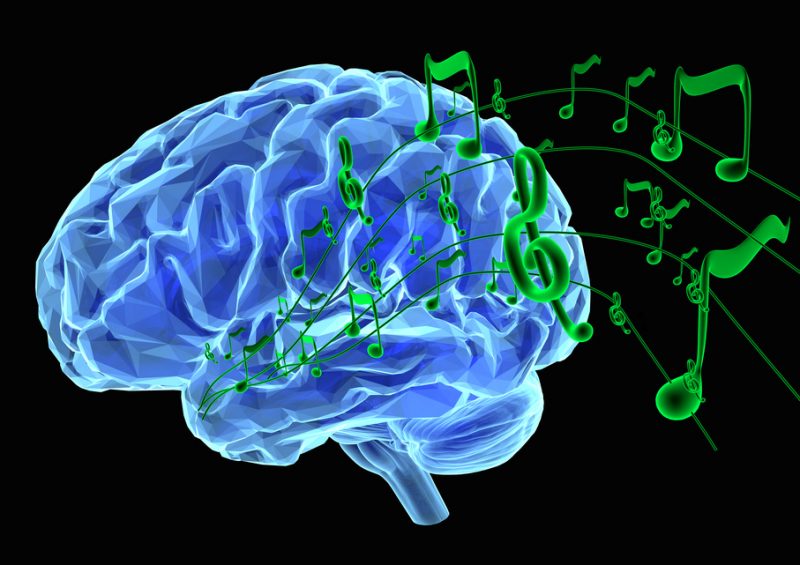How Your Favorite Songs Can Trigger Chill-Producing Moments
by Chrostppher Bergland
Chill-inducing songs boost cortical connectivity and activate dopamine release.
Does hearing a particular verse, hook, bridge, or chorus of a song that you love ever send shivers down your spine or give you a tingling feeling accompanied by pleasurable chills? Almost every anthem or “power song” on my workout playlist has a climactic moment that never fails to give me goosebumps. My favorite chill-inducing song right now is the live-streamed Whisky a Go Go #SaveOurStages version of “Zombie” by Miley Cyrus. Does watching this powerhouse performance on YouTube give you chills, too?
For me, the spine-tingling climax of this emotionally raw live performance starts around the 3:53 mark when the lead guitarist does an amazing solo, followed by the drummer’s crescendo and Miley’s final “outro” round of gutsy, heartfelt vocals.
Does Everyone Experience Musical Chills Along with Goosebumps?
Previous research (Panksepp, 1995) suggests that women are more likely than men to experience “frissons,” “chills,” or what some researchers describe as “skin orgasms” (Harrison & Loui, 2014) while listening to music that strikes a deep emotional chord.
Another study (Craig, 2005) designed to assess physiological responses during music-induced chills found that only about half of the study participants experienced piloerection (i.e., goosebumps) during moments of emotional excitement while hearing a pleasurable song. However, galvanic skin responses (i.e., sweat gland activity) while hearing hedonic music was more common.
Beyond these physiological markers, what’s happening in someone’s brain when they experience pleasurable shivers while listening to music? A new high-density EEG study (Chabin et al., 2020) identifies some signature cortical patterns associated with pleasurable musical chills. These findings were published on November 3 in the peer-reviewed journal Frontiers in Neuroscience.
For this study, first author Thibault Chabin and colleagues at the Université de Bourgogne Franche-Comté in France recruited a cohort of people who self-reported regularly experiencing chills while listening to their favorite music. While each study participant was listening to 90-second snippets from a catalog of self-selected “favorite songs” that had previously given them pleasurable chills, the neuroscientists monitored brain activity via non-invasive EEG electrodes applied to the scalp.
Each participant also filled out a real-time questionnaire designed to zero in on the exact moment someone experienced chills and to rate the degree of chill-inducing pleasure he or she was experiencing. On average, each “music-induced chill” lasted for 8.75 seconds.
“Participants of our study were able to precisely indicate ‘chill-producing’ moments in the songs, but most musical chills occurred in many parts of the extracts and not only in the predicted moments,” Chabin said in a November 3 news release.
From a neuroscience perspective, when a study participant experienced pleasurable musical chills, Chabin et al. observed an uptick of theta activity in the prefrontal cortex in conjunction with higher arousal and emotional-response ratings.
Additionally, two other specific cortical patterns associated with chills were identified:
- Decreased theta activity in the right central region, which could reflect supplementary motor area activation during chills and may be related to rhythmic anticipation processing.
- Decreased theta activity in the right temporal region, which may be related to musical appreciation and could reflect the right superior temporal gyrus activity.
“These regions work together to process music, trigger the brain’s reward systems, and release dopamine—a ‘feel-good’ hormone and neurotransmitter,” the authors explain. “Combined with the pleasurable anticipation of your favorite part of the song, this produces the tingly chill you experience—a physiological response thought to indicate greater cortical connectivity.”
According to the authors, their high-density EEG findings correspond with fMRI and PET scan findings from previous research and suggest that “EEG is a reliable method and a promising tool for the investigation of group musical pleasure through musical reward processing.”
“Contrary to heavy neuroimaging techniques such as PET scan or fMRI, classic EEG can be transported outside of the lab into naturalistic scenarios,” Chabin noted. “The fact that we can measure this phenomenon with EEG brings opportunities for study in other contexts, in scenarios that are more natural and within groups. This represents a good perspective for musical emotion research.”
Future research into cortical patterns associated with pleasurable musical chills by Chabin and colleagues will measure cerebral and physiological activity outside the laboratory, in social musical settings such as concert halls and other live performance venues. Chabin concludes: “Musical pleasure is a very interesting phenomenon that deserves to be investigated further, in order to understand why music is rewarding and unlock why music is essential in human lives.”
References
Thibault Chabin, Damien Gabriel, Tanawat Chansophonkul, Lisa Michelant, Coralie Joucla, Emmanuel Haffen, Thierry Moulin, Alexandre Comte, and Lionel Pazart. “Cortical Patterns of Pleasurable Musical Chills Revealed by High-Density EEG.” Frontiers in Neuroscience (First published: November 03, 2020) DOI: 10.3389/fnins.2020.565815
Luke Harrison and Psyche Loui. “Thrills, Chills, Frissons, and Skin Orgasms: Toward an Integrative Model of Transcendent Psychophysiological Experiences in Music.” Frontiers in Psychology (First published: July 23, 2014) DOI: 10.3389/fpsyg.2014.00790
Daniel G. Craig. “An Exploratory Study of Physiological Changes during “Chills” Induced by Music.” Musicae Scientiae (First published: July 01, 2005) DOI: 10.1177/102986490500900207
Jaak Panksepp. “The Emotional Sources of ‘Chills’ Induced by Music.” Music Perception (First published: December 01, 1995) DOI: 10.2307/40285693

